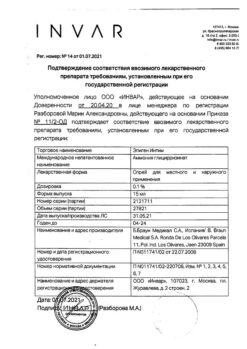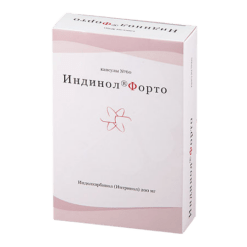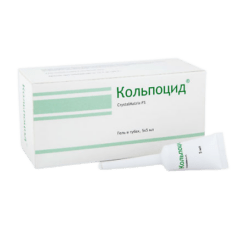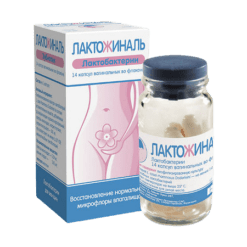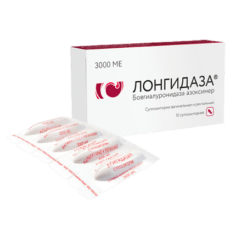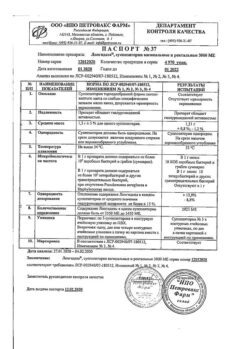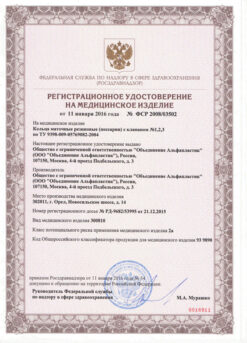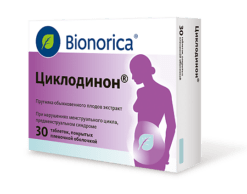No products in the cart.
Orgametril, tablets 5 mg 30 pcs
€85.35 €71.12
Description
Orgametril is progestagenic.
Binds to specific cytoplasmic receptors, forming a complex that interacts with the chromatin of target cells.
Causes the transition of the uterine mucosa from the proliferation phase to the secretory phase.
Pharmacodynamics
It has a pronounced atrophic effect on the myometrium; suppresses ovulation and menstruation (with prolonged continuous administration).
Indications
Indications
pregnancy prevention infertility
endometriosis
prevention of miscarriage
premenstrual syndrome
menstrual irregularities
uterine bleeding.
Pharmacological effect
Pharmacological effect
Orgametril is progestogenic.
It binds to specific cytoplasmic receptors, forming a complex that interacts with the chromatin of target cells.
Causes a transition of the uterine mucosa from the proliferation phase to the secretory phase.
Pharmacodynamics
Has a pronounced atrophic effect on the myometrium; suppresses ovulation and menstruation (with long-term continuous use).
Special instructions
Special instructions
Treatment should be interrupted if test results indicate liver dysfunction.
Chloasma is sometimes observed when taking medications containing estrogen and/or progestogen, especially in women with a history of chloasma during pregnancy. Women prone to chloasma should avoid exposing their skin to sunlight or artificial UV radiation.
Taking sex hormones may interfere with specific laboratory tests. In many patients, during treatment with Orgametril, the level of LDL in the blood may increase and the level of HDL will decrease. Changes in parameters of liver function, carbohydrate metabolism, and blood coagulation system are possible.
For long-term treatment, systematic medical examinations are indicated; control of lipid and carbohydrate metabolism, bilirubin concentrations, transaminases, coagulation system. The frequency and nature of systematic medical examinations depend on the circumstances in each individual case and should be determined in accordance with clinical judgment, but at least once every 6 months.
Due to the effect of linestrenol on the level of sex hormone binding globulin, Orgametril may exhibit some androgenic activity. This may result in mild signs of virilization (mainly acne or seborrhea).
Epidemiological studies have revealed an association between the use of progestogen in combination with estrogens and an increased incidence of venous thromboembolism (deep vein thrombosis and pulmonary embolism). Although the clinical significance of these data for linestrenol without an estrogen component is unknown. In case of thrombosis, you should stop taking Orgametril. The need to discontinue Orgametril should also be considered in the event of prolonged immobilization due to surgery or illness. Women with a history of thromboembolic disease should be informed of the possibility of recurrence.
It is necessary to constantly monitor the condition of patients with circulatory disorders (as well as if there is a history of them), since when taking oral estrogen/progestin contraceptives, the risk of certain cardiovascular diseases or cerebrovascular conditions slightly increases.
While taking the drug Orgametril, it is recommended to limit the intake of fats and carbohydrates (which is especially important for women with initially increased body weight).
In case of diabetes mellitus, the glycemic profile should be monitored (increasing the insulin dose may be required).
If you are predisposed to arterial hypertension, it is necessary to control blood pressure (reduce fluid intake to 1.5-2 l/day).
In the case of dysfunctional uterine bleeding in women of reproductive age, it is recommended to begin therapy after therapeutic and diagnostic uterine curettage.
Ineffectiveness of therapy (recurrence of bleeding and hyperplastic processes of the endometrium) requires clarification of the causes of bleeding.
If menstruation is delayed for a long time during therapy with Orgametril, ectopic pregnancy should be excluded.
Orgametril contains lactose as an excipient. Therefore, this drug should not be prescribed to patients with rare hereditary disorders such as galactose intolerance, lapp lactase deficiency or glucose-galactose malabsorption.
Impact on the ability to drive vehicles and operate machinery
Since the drug may cause dizziness, patients should exercise caution when driving vehicles or other equipment.
Active ingredient
Active ingredient
Linestrenol
Composition
Composition
Active ingredient:
linestrenol 5 mg;
Excipients:
potato starch,
α-tocopherol,
glycerol,
magnesium stearate,
talc,
lactose monohydrate
Contraindications
Contraindications
severe liver disease
previous history of ectopic pregnancy
severe diabetes mellitus; tumors of the breast and reproductive system.
Side Effects
Side Effects
When using Orgametril as a therapeutic agent, breakthrough bleeding or spotting from the genital tract, increased or decreased libido, nausea, diarrhea, headache, dizziness, weight gain are possible; rarely – nervousness, depression, increased sweating, acne, hirsutism, chloasma, rash, itching, jaundice, changes in liver function tests, decreased glucose tolerance, changes in the spectrum of lipoproteins, pain in the mammary glands, increased blood clotting.
When using Orgametril as a means of oral contraception, intermenstrual bleeding, shortening of the menstrual cycle (less than 25 days) or oligomenorrhea (more than 45 days), nausea, headaches, engorgement of the mammary glands, weight gain, fluid retention in the body, decreased libido, arterial hypertension, acne, decreased glucose tolerance, pigmentation are possible.
Interaction
Interaction
Although there is insufficient data, interactions between Orgametril and other medicines are possible. The following interactions have been described with the use of synthetic progestogens or combined oral contraceptives and are also relevant to the drug Orgametril.
Rifamycin, hydantoin derivatives (including phenytoin), barbiturates (including primidone), carbamazepine and aminoglutethimide, laxatives, activated charcoal can reduce the effectiveness of Orgametril. Conversely, Orgametril may increase the therapeutic, pharmacological or toxicological effects of cyclosporine, theophylline, troleandomycin and beta-blockers.
Orgametril may reduce the effectiveness of insulin.
When used simultaneously with macrolide antibiotics, the risk of developing toxic liver damage may increase.
Overdose
Overdose
Symptoms: nausea, vomiting.
Treatment: symptomatic therapy.
Storage conditions
Storage conditions
In a dry place, protected from light, at a temperature of 2–30 °C
Shelf life
Shelf life
5 years
Manufacturer
Manufacturer
N.V.Organon, Netherlands
Additional information
| Shelf life | 5 years |
|---|---|
| Conditions of storage | In a dry, light-protected place at 2-30 °C |
| Manufacturer | N.W. Organon, The Netherlands |
| Medication form | pills |
| Brand | N.W. Organon |
Related products
Gynecology and Obstetrics
Buy Orgametril, tablets 5 mg 30 pcs with delivery to USA, UK, Europe and over 120 other countries.



